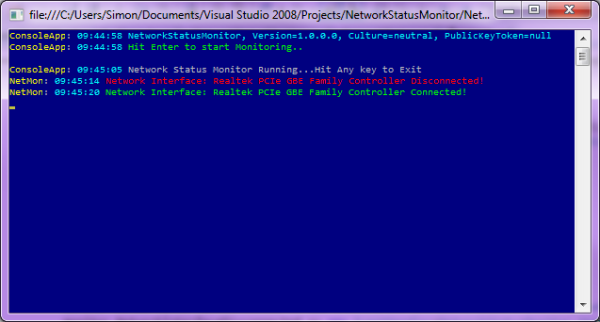
VB NET SIMPLE VPN HOW TO
Click the button over the form you are done! Please note, this sample is restricted to fetch IPV4 addresses.Įver wondered how to fetch the last logon details for a domain member computer or user? Using. Now replace the “hostname” with some actual hostnames and execute the application by pressing F5. Public Function getip(ByVal lst As ListBox) As ListBoxĭim hostEntry = Dns.GetHostEntry("hostname")ĭim addressList As New List(Of IPAddress)įor Each address In hostEntry.AddressList
VB NET SIMPLE VPN CODE
Right click on the form and select view code, once the code page opensĬopy and paste the below code block (replacing the original content of the code page) & do not change any property for any of the above items We’ll be mostly doing our samples using forms, a better mechanism to test stuffs against console applications (Minimum from our experiences)
VB NET SIMPLE VPN WINDOWS
Net framework is 4.5 by default, hence if few things do not work at your setups, please cross check the specs we specified) and create a Windows form application. Open Visual Studio IDE (We are using VS 2012 Express and the. Please post your comments and queries and I may learn few more things with you! Net programmers Aziz Marafi /, who had coded majority of the block above for the “FileMyster” project. Pretty simple & easy, right? You may rush ahead and say thanks to my dearest friend and ONE of the best.

Now, as you click on the first button, a new node for “MACHINE” will be inserted using the static information attached & by activating the second button, your data grid view should populate the MACHINE information already stored within the XML file. XmlFile = XmlReader.Create("MyVMS.xml", New XmlReaderSettings())ĭataGridView1.Columns(0).HeaderText = "Id"ĭataGridView1.Columns(1).HeaderText = "VM Name"ĭataGridView1.Columns(2).HeaderText = "Shutoff Mode" Private Sub Button2_Click(sender As Object, e As EventArgs) Handles Button2.Click

Private Sub Button1_Click(sender As Object, e As EventArgs) Handles Button1.Clickĭim e1 As XmlElement = xmldoc.CreateElement("MACHINE")ĭim e2 As XmlElement = xmldoc.CreateElement("MACHINE_ID")ĭim e3 As XmlElement = xmldoc.CreateElement("VM_NAME")ĭim e4 As XmlElement = xmldoc.CreateElement("VM_SHUTDOWNMODE") Now we will try to add one more “MACHINE” node into the existing XML file using VB.Net code block Without wasting more time, let us see how to append an “existing” XML file using VB.NetĬreate a XML file (MyVMS.xml) using your favorite text editing tool and copy the belowĪnd copy the XML file to the project root folderĪs I said in the beginning, we will be adding data to an “existing” XML file, hence the XML files must have a root element, for exampleĭrag a button to your forms1.vb design viewĭrag another button to your forms1.vb design viewĭrag a DataGridView to your forms1.vb design view This project deals with running Oracle VirtualBox VM(Virtual Machines) headless using a Windows Service as Local System so that multiple administrators could log in and log off from the Windows Server that hosts Virtual machines without closing down the machines abrupt (This project is ongoing, half cooked)

I needed to add a XML file to hold certain configuration details that could be read with one of the VB.Net projects currently I am busy with. It is vast and learning XML could be requiring loads of dedication.


 0 kommentar(er)
0 kommentar(er)
